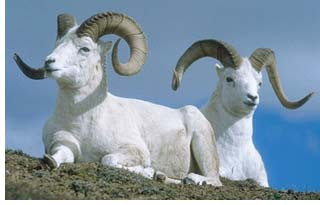Beautiful views of the layout
Location: North
Visitors per year: app. 3-4 million
Date established:
Origin of name: The park was named teton form the french word tétons, because of a french explorer's view of it.
Main attractions: The world renown Grand Teton National Park has a breathtaking view that includes pristine lakes, majestic mountains, and extraordinary wildlife.Cunningham Cabin and Lake Solitude are two of the most highlighted attractions.
Terrain: Mountainous, canyons, lakes, and river valley
 Beaver
Beaver
Backpacking-
*To truly witness the park a popular activity is backpacking.
*The Teton Crest is one of the best ways to get a taste of all the flavors the park has to offer. It is said to be one of the most outstanding hikes of your lifetime!
*The trail runs north from the park's southern border through the high country of the Tetons for 39 miles, ending at

The Snake River-
*The Snake is a very complex river to float.
Facts to remember-
Teton Range - An active fault-block mountain front, 40 miles long (65 km), 7-9 miles wide (11-14.5 km).
Highest peak -
Jackson Hole - Mountain valley, 55 miles long (89 km), 13 miles wide (21 km), average elevation 6,800 feet (2073 m). Lowest elevation at south park boundary, 6350 feet (1936 m).
Climate - Semi-arid mountain climate. Extreme high: 93 degrees F (34 degrees C). Extreme low: -46 degrees F (-43 degrees C).
Average snowfall - 191 inches (490 cm). Avg. rainfall: 10 inches (26 cm).
Snake River - Headwaters of the Columbia River system, 1056 miles long. Approximately 50 miles lie within Grand Teton NP. Major tributaries: Pacific Creek,







































 Bryce Canyon National Park
Bryce Canyon National Park
 These rock formations are in shades of pink and red
These rock formations are in shades of pink and red


 Snowshoeing on Bryce Canyon
Snowshoeing on Bryce Canyon Crater Lake offers a wide variety of skiing trails for all levels.
Crater Lake offers a wide variety of skiing trails for all levels. A beautiful view of the lake during the Summer. At Crater Lake there is usually always snow on the ground unless you visit in the Summer or late Spring.
A beautiful view of the lake during the Summer. At Crater Lake there is usually always snow on the ground unless you visit in the Summer or late Spring. A breath-taking view of Crater Lake.
A breath-taking view of Crater Lake.


